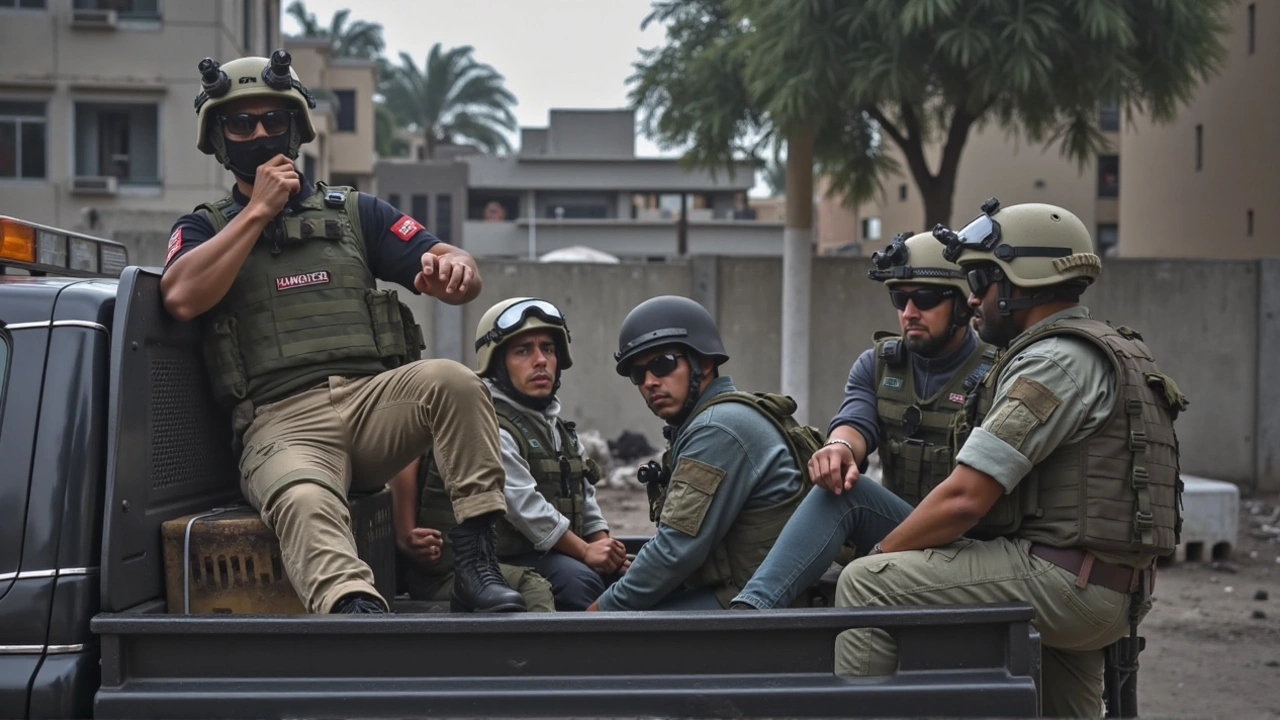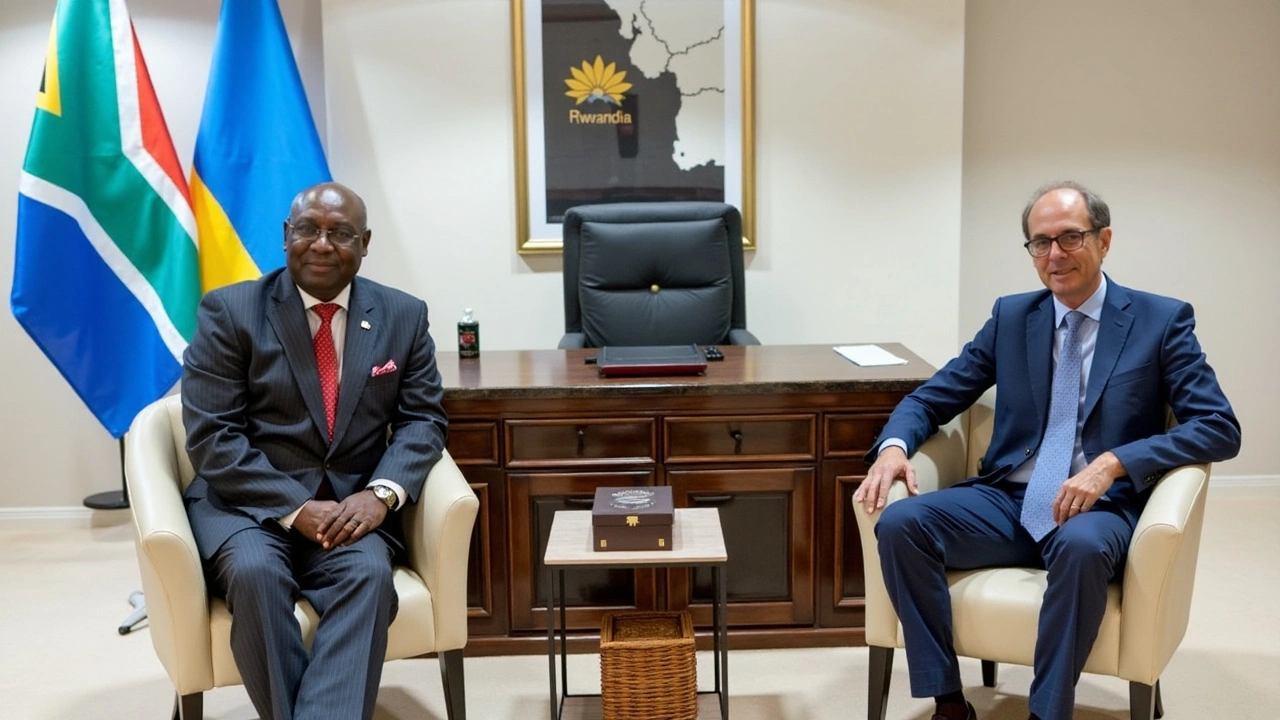Introduction to the Conflict in Eastern DRC
The Democratic Republic of Congo (DRC) has long been a hotspot of conflict, plagued by complex disputes and power struggles. The eastern regions of this vast nation have witnessed the brunt of these violent engagements. Amidst this turmoil, international involvement has come from various fronts, seeking stabilization and a semblance of peace. Yet, these efforts have not always been successful, occasionally resulting in even more complicated scenarios. The Southern African Development Community Mission in the DRC (SAMIDRC) is a case in point, facing substantial criticism for its actions in the region.
Kagame's Accusations Against South Africa
Leading up to an upcoming Southern African Development Community (SADC) summit in Harare, Zimbabwe, President Paul Kagame of Rwanda raised serious complaints about the SAMIDRC's dealings in the DRC. He accused the mission of acting as a belligerent force instead of promoting peace. His pointed criticisms were particularly directed at South Africa—one of the contributors to the SAMIDRC force—questioning its capability and intentions in playing the mediator's role in the conflict. Kagame's discontentment stems from what he described as distortions by South African officials, including President Cyril Ramaphosa, who allegedly misinterpreted private conversations between the two leaders in public forums.
The Nature of SAMIDRC's Mission
Kagame took to social media, specifically X, to voice his opinions strongly. He highlighted that SAMIDRC was not formed as a typical peacekeeping operation. According to Kagame, it was an offensive force granted the authority by SADC to take combative measures to support the DRC government's agenda. This aggressive stance of SAMIDRC, Kagame contended, effectively sidelined the East African Community Regional Force. The latter was supposedly a more genuine peacekeeping entity, aiming for dialogues and negotiations, which were dismissed in favor of military actions.
Ramaphosa's Call for Peace
On the flip side, South African President Cyril Ramaphosa has reportedly urged for a different approach. He has emphasized the need for negotiations and a ceasefire, recognizing that a long-lasting solution to the DRC's problems cannot be achieved through military strength alone. Ramaphosa has advocated for diplomatic and political resolutions to end the crisis that has escalated significantly, with factions like the M23 rebels making aggressive gains.

Consequences of the Increasing Tensions
As the situation becomes tenser, the rebels, reportedly backed by Rwanda, have captured major cities like Goma and advanced further south. This has led to speculation within SADC circles about the potential withdrawal of forces from the DRC in favor of pushing for peace talks and a comprehensive ceasefire. With South African troops trapped in uncertain territories such as Sake and Goma, under a truce led by the M23 rebels, the dynamics threaten to become even murkier.
Military Presence and Preparedness
The current status of South African forces is somewhat precarious. Reports indicate they are maintained under a fragile peace with the rebels, allowed to retain their arms and equipment temporarily. There is talk that they might be facilitated to exit the DRC via Rwanda. Nevertheless, the landscape remains unstable, with Defense and Military Veterans Minister Angie Motshekga assuring that the soldiers have not been harmed recently, though there have been 13 fatalities over the past week.
Calls for Ceasefire and International Reaction
The East African Community, also bearing a stake in the region, is advocating for a peaceful resolution. It has called upon all involved parties, including the heavyweight M23 group and other armed factions, to agree to a ceasefire. The United Nations Security Council hasn't remained silent either, condemning M23's assertive moves towards Goma—a friction point that threatens to pull in more international actors into the already convoluted puzzle.
Looking Forward to the SADC Summit
As the January 31 SADC summit approaches, all eyes will be on Harare, where leaders will converge to discuss their next steps concerning the DRC. This meeting could be pivotal in defining the approach the region, and by extension, Africa, will take in addressing the turmoil in eastern Congo. The stakes are high, with regional peace and stability hanging in the balance. The divergent views between Kagame and Ramaphosa might influence the outcome of these discussions, as they navigate the complex dynamics of regional politics and alliances.


 Sports
Sports
Chand Shahzad
February 1, 2025 AT 07:55President Kagame's remarks underscore a fundamental tension within SADC regarding the appropriate balance between peacekeeping and combat operations, and it is crucial that member states engage in a constructive dialogue to address these concerns.
Eduardo Torres
February 5, 2025 AT 23:01The situation in eastern DRC certainly calls for a coordinated regional effort; optimism can still be found if leaders prioritize inclusive negotiations over unilateral military actions.
Emanuel Hantig
February 10, 2025 AT 14:08It’s striking how the narrative pits South African troops against Rwandan interests, yet the conflict’s roots are far deeper, involving local grievances, resource struggles, and historical distrust. 😊
Byron Marcos Gonzalez
February 15, 2025 AT 05:15Ah, the grand theater of African geopolitics where the curtain rises on another act of blame‑shifting and ego‑inflated posturing; the drama never ceases to amuse.
Chris Snyder
February 19, 2025 AT 20:21From a strategic standpoint, a mixed approach that blends diplomatic channels with measured security presence could mitigate the risk of escalation while still protecting civilians.
Hugh Fitzpatrick
February 24, 2025 AT 11:28Looks like another episode of “who’s the bad guy?” – spoiler: it’s everyone.
george hernandez
March 1, 2025 AT 02:35When we examine the broader tapestry of regional security, it becomes evident that the SAMIDRC deployment is not an isolated incident but rather a symptom of a long‑standing pattern of external powers attempting to assert influence without fully understanding the complex local dynamics; the historical grievances that date back to the colonial era still echo in today’s power struggles, and the legacy of resource exploitation continues to fuel armed groups seeking control over lucrative mineral corridors; furthermore, the divergent political agendas of member states often clash, leading to contradictory policies that undermine collective action; this dissonance is amplified by the presence of multiple militias, each with its own set of demands and external backers, creating a labyrinthine conflict zone where simple military solutions are insufficient; in light of these realities, a more nuanced approach that incorporates community‑led peace initiatives, economic development programs, and transparent accountability mechanisms could pave the way for sustainable stability; such an approach would require genuine commitment from all SADC members to prioritize long‑term regional cohesion over short‑term geopolitical gains; without this, the cycle of violence is likely to persist, draining resources and eroding public trust in regional institutions; ultimately, the summit in Harare presents a pivotal opportunity to reset the agenda, but only if leaders are willing to confront uncomfortable truths and forge a truly collaborative strategy.
bob wang
March 5, 2025 AT 17:41Dear colleagues, let us consider the diplomatic avenues available; it is incumbent upon us to adopt a measured tone, to seek common ground, and to avoid precipitous actions that could exacerbate tensions. 😃
Seyi Aina
March 10, 2025 AT 08:48Honestly, I'm tired of the endless blame game – everyone’s got a finger in the pie but no one wants to clean up the mess.
Alyson Gray
March 14, 2025 AT 23:55Yo, this whole thing feels like a bad rom‑com where the hero thinks he can fix everything with a hug, but the villains are armed to the teeth and the script never changed. u kno what i mean? The drama is real and the stakes are huge.
We need real talk, not just twitter spiels.
Shaun Collins
March 19, 2025 AT 15:01Another day, another “solution” that looks good on paper but does nothing for the folks on the ground.
Chris Ward
March 24, 2025 AT 06:08Is it really so hard to imagine that a peace summit could focus on human lives rather than power plays? idk maybe I'm just being naive.
Heather Stoelting
March 28, 2025 AT 21:15We gotta keep the momentum going – every little step toward dialogue counts, even when the news feels bleak.
Travis Cossairt
April 2, 2025 AT 12:21yeah, i think its a good time to look at how these forces affect the local community and maybe push for some real diplomatic channels.
Amanda Friar
April 7, 2025 AT 03:28Sure, let’s all sing kumbaya while the artillery keeps rolling – classic sarcasm, but sometimes sarcasm is the only language we have left.
Sivaprasad Rajana
April 11, 2025 AT 18:35Peace is a process, not an event; sustainable solutions require patience, mutual respect, and a willingness to listen beyond borders.